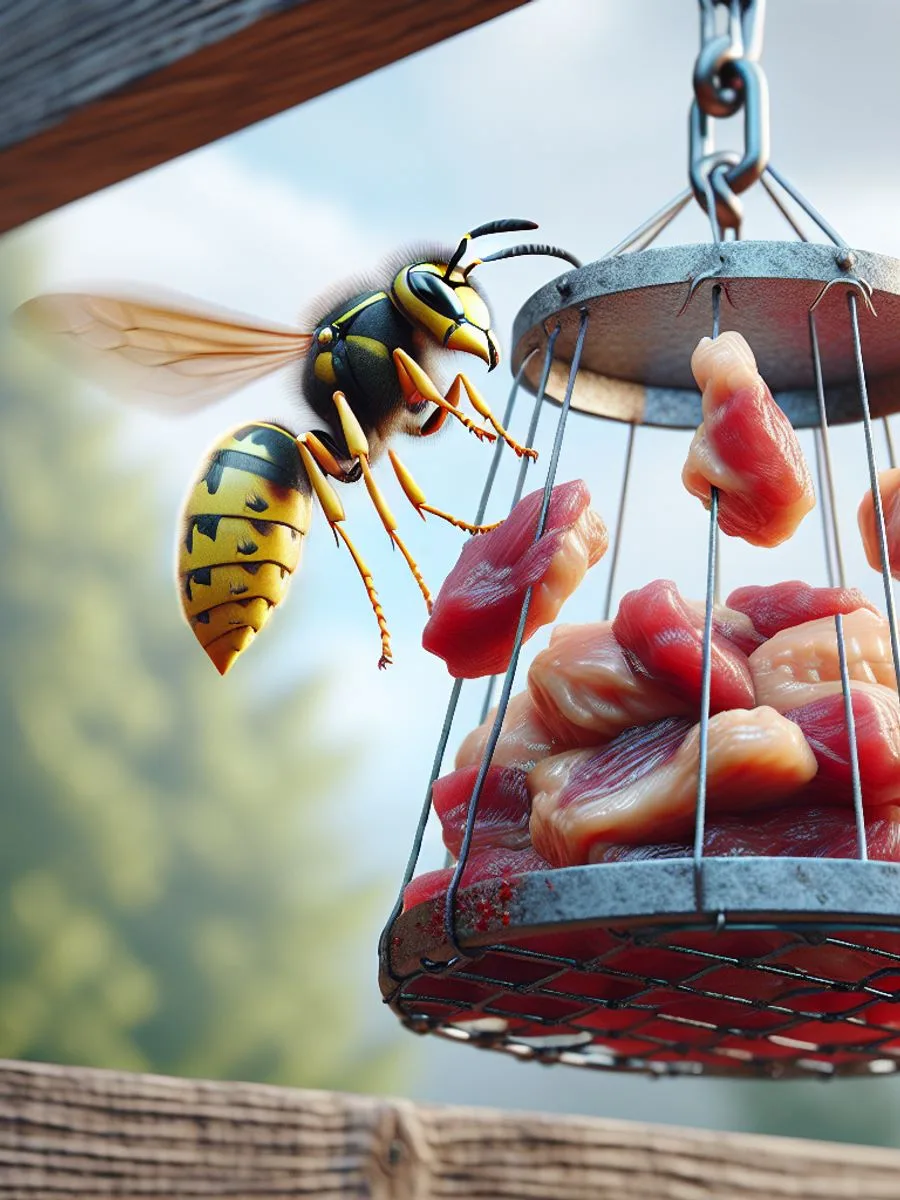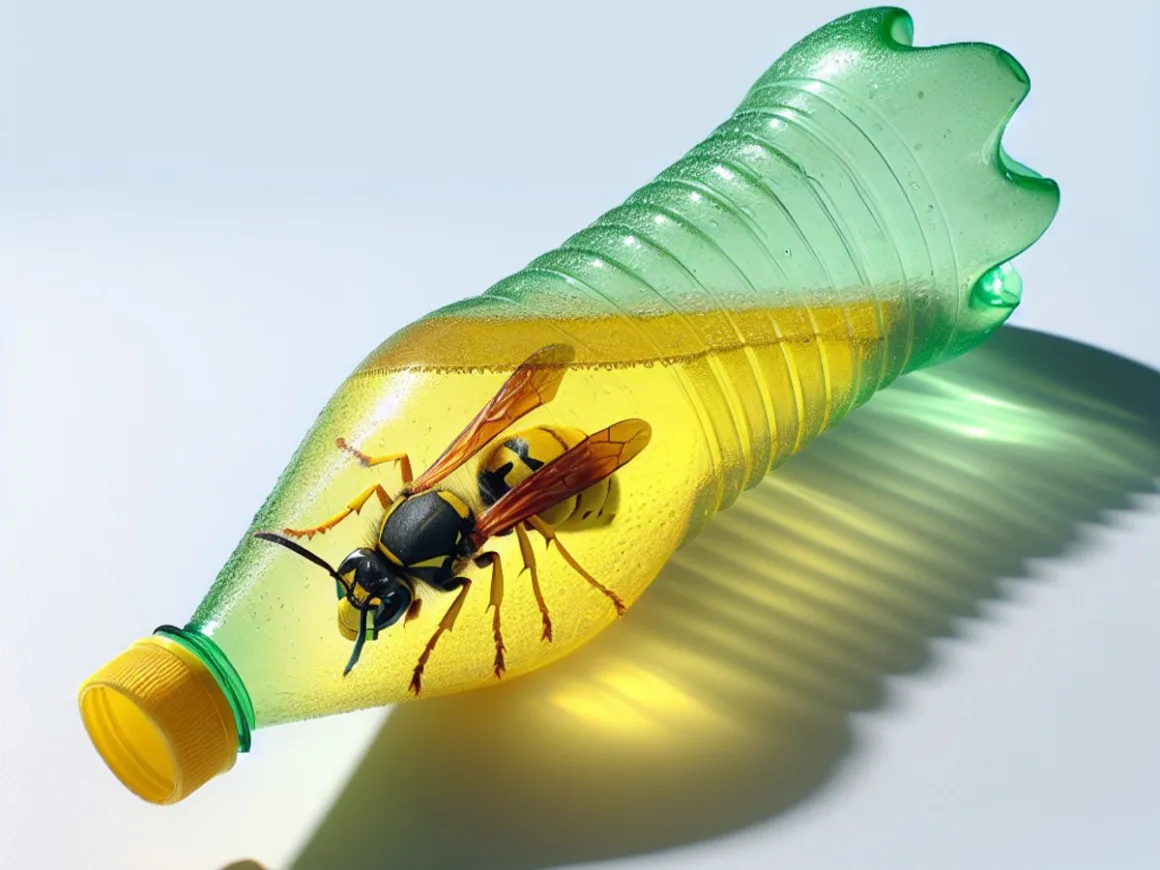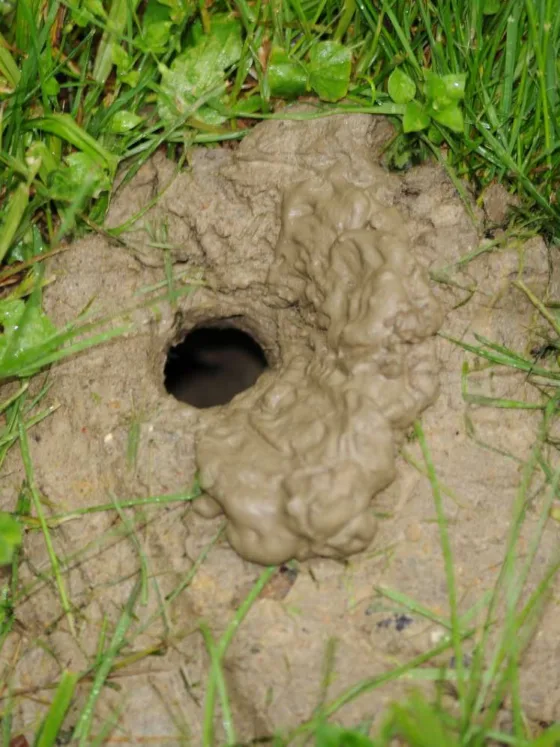Table of Contents Show
Introduction
Yellow jacket infestations are a common problem that many homeowners face. These aggressive wasps can disrupt outdoor activities, pose a threat to people and pets, and even damage crops and gardens. Effective traps are essential to control their populations and protect your environment.
The idea of unconventional traps adds a fascinating twist to traditional pest control methods. By outsmarting yellow jackets with creative solutions, you can achieve better results without relying heavily on chemical treatments.
In this article, we explore several unique wasp traps that have shown promising results according to experts and experienced pest control professionals. These methods might not be the first ones you think of, but they offer innovative ways to catch yellow jackets effectively.
For instance, if you’re dealing with a yellow jacket infestation in your garden or near blueberry bushes, it’s worth considering some unconventional traps. You see, just like yellow jackets can harm your outdoor space, there are also common pests and diseases that can affect blueberries themselves. Understanding these threats is crucial for protecting your crop from blueberry maggot, mummy berry, blueberry stem blight, spotted wing drosophila, and powdery mildew.
These unique wasp traps not only help in controlling the yellow jacket population but can also safeguard your blueberry plants from these common pests and diseases. As we delve into these unconventional methods, you’ll find practical tips and detailed instructions to implement them in your own yard.
Understanding the Threat of Yellow Jackets to Bees
Bees, especially honeybees, are crucial for pollination, which is necessary for the growth of many fruits and vegetables. However, they are highly susceptible to attacks by yellow jackets. Unlike bees, yellow jackets are aggressive scavengers that target bees because they are smaller and have weaker defenses.
Impact on Bee Hives
An infestation of yellow jackets can have severe consequences for a bee hive:
- Reduced Honey Production: Yellowjackets steal honey, which deprives the hive of this vital food source.
- Weakened Colony Health: Constant attacks cause stress and make it harder for bees to gather food and perform other necessary tasks.
- Hive Collapse: If not dealt with quickly, a serious infestation can lead to the complete destruction of the bee colony.
Proactive Protection Strategies
It’s important to take proactive measures to safeguard bees from yellow jackets while minimizing harm to the environment and other beneficial insects. Here are some effective strategies:
- Implementing traps specifically designed for yellow jackets can help capture them without harming bees or other insects.
- Using natural insect repellents that repel yellow jackets can also be an eco-friendly approach.
- Maintaining cleanliness around the hive area by removing any potential food sources for yellow jackets can discourage their presence.
By following these strategies, you can help maintain the health of bee hives and support a balanced ecosystem.
For urban dwellers keen on conservation, an urban beekeeping guide provides valuable tips on how to boost pollination in cities, enhancing garden health and biodiversity. Additionally, deploying natural insect repellents offers an earth-friendly way to repel bugs without harming beneficial insects.
1. Hanging Meat Traps

Yellow jackets are carnivorous scavengers with a strong attraction to protein-based food sources. This behavior is exploited by hanging meat traps, which lure the wasps using meat as bait. These traps work because yellow jackets are naturally drawn to the smell of decomposing meat, which they scavenge to feed their larvae.
To set up an effective hanging meat trap in your outdoor area, follow these steps:
- Select the Bait: Use fresh or slightly spoiled meat such as chicken, fish, or beef. The strong odor of decomposing meat is particularly effective in attracting yellow jackets.
- Prepare the Container: Choose a plastic bottle or jar with a narrow neck. Poke a few small holes around the upper part of the container to allow wasps to enter.
- Hang the Trap: Suspend the trap at least 3-5 feet above ground level in areas where yellow jackets are active, such as near gardens, outdoor dining spaces, or known nesting sites.
- Monitor and Replace Bait: Check the trap regularly and replace the bait every few days to maintain its effectiveness.
Entomologists and experienced gardeners have reported success using hanging meat traps. For instance:
- Dr. James Carpenter, an entomologist at the American Museum of Natural History, shared that hanging meat traps significantly reduced yellow jacket populations in controlled field experiments.
- Gardeners from California have observed noticeable decreases in yellow jacket activity when using fresh fish as bait in their traps.
These examples highlight the practical effectiveness of hanging meat traps in managing yellow jacket infestations without harming other beneficial insects.
For additional tips on keeping insect pests at bay, consider visiting this guide.
2. DIY Soda Bottle Traps

Creating a yellow jacket trap using an empty soda bottle is a straightforward yet highly effective method. This homemade yellow jacket trap capitalizes on the insects’ attraction to sweet liquids and sugary foods.
Construction Steps
Step 1: Gather Your Materials
You will need the following items:
- Empty plastic soda bottle (2-liter works best)
- Scissors or a sharp knife
- String or wire for hanging
- Sugary bait (e.g., sugar water, fruit juice, soda)
Step 2: Prepare the Trap
Follow these instructions to assemble your trap:
- Use scissors or a knife to cut off the top third of the soda bottle.
- Invert the top portion and place it back into the bottom part, creating a funnel leading into the bottle.
- Tape or staple the edges where the inverted top meets the bottle body to secure it tightly.
- Pour your chosen sugary bait into the bottom part of the trap.
- Attach a string to hang your trap from trees or structures, or simply place it in high-activity areas.
Advantages of DIY Soda Bottle Traps
- Low Cost: The materials required are often items you already have around your home, making this an inexpensive option.
- Accessibility of Materials: Empty soda bottles and sugary baits are readily available, ensuring anyone can quickly set up a trap.
- Customization Options: You can easily modify the trap to suit specific needs, such as adjusting bait types or altering entry points.
Tips and Tricks for Enhanced Effectiveness
Here are some additional tips for making your DIY soda bottle trap even more effective:
- Visual Attractants: Adding bright colors or reflective surfaces inside or near the trap can increase its attractiveness to yellow jackets.
- Entry Point Modifications: To prevent escapes, ensure that entry holes are small enough to allow entry but challenging for wasps to exit. Consider adding a bit of vegetable oil around the funnel’s edge to make climbing out more difficult.
- Bait Variations: Rotate different types of sugary baits like fruit juices, sodas, or even beer mixed with sugar to keep yellow jackets interested.
Using DIY soda bottle traps provides an efficient and eco-friendly way to manage yellow jacket populations without resorting to harmful chemicals. However, if you’re dealing with wasps nesting on your property, it’s essential to take preventive measures as well. Preventing wasps from nesting on your house can significantly reduce the chances of encountering these stinging insects in the first place. Additionally, it’s worth learning from the experiences of seasoned beekeepers who have dealt with similar situations, such as lessons from a year of wasp management. For those interested in exploring more trap options, this resource offers various trap designs and methods that can be useful when dealing with not just yellow jackets but also other wasp species.”.
3. Repurposed Container Traps

Repurposed container traps, or upcycled wasp traps, take advantage of everyday household items to create effective yellow jacket traps. This method not only helps in managing pest problems but also promotes sustainable practices by reusing materials that would otherwise be discarded.
Examples of Repurposed Container Traps
- Glass Jars with Inverted Funnels: A common and effective trap involves using a glass jar fitted with an inverted funnel. The yellow jackets enter through the narrow opening of the funnel but find it difficult to escape.
- Plastic Milk Jugs with Sugar Water Baits: Another popular option is repurposing plastic milk jugs. Fill these jugs with a mixture of sugar water to attract yellow jackets. Once inside, the insects struggle to find their way out due to the smooth, slippery walls.
- Tin Cans with Oil-Based Attractants: Tin cans can be transformed into traps by coating the inner surface with oil-based attractants like fish oil or meat drippings. The slick interior makes it hard for yellow jackets to escape once they are lured inside.
Eco-Friendly Aspect
Repurposing containers for wasp traps aligns well with sustainable pest management practices. By utilizing items that are already available at home:
- Reduces Waste: Reusing containers minimizes waste and reduces the need for new materials.
- Cost-Effective: These traps are budget-friendly since they utilize items that would otherwise be discarded.
- Environmentally Friendly: This method avoids harmful chemicals, making it safer for other beneficial insects and the environment.
Setting Up Repurposed Container Traps
- Select an Appropriate Container: Choose a container based on what you have available—glass jars, plastic jugs, or tin cans.
- Prepare the Bait: Depending on the container type, prepare a suitable bait such as sugar water for plastic jugs or oil-based attractants for tin cans.
- Position Strategically: Place these traps in high-activity areas where yellow jackets are frequently seen.
Utilizing repurposed container traps offers an innovative and environmentally conscious approach to managing yellow jacket infestations effectively.
Optimizing Trap Placement and Maintenance
Strategic Trap Positioning
Placing traps in high-activity areas is crucial for capturing yellow jackets effectively. Position traps near:
- Outdoor dining areas where food scraps attract yellow jackets.
- Gardens where they may forage for other insects.
- Garbage cans or compost bins, are common scavenging sites.
Suspending traps at a height of 4 to 6 feet ensures they are within the flight path of these insects.
Effective Trap Maintenance
Regular maintenance prolongs the effectiveness of your traps. Here’s how:
- Clean traps weekly to prevent odor buildup, which can deter yellow jackets from entering.
- Replace bait regularly, especially in warm weather when it spoils faster.
- Check for damage and repair or replace traps as needed to maintain their integrity.
Rotating Bait Types and Trap Designs
Avoid trap-shyness by varying bait types and trap designs:
- Rotate protein-based baits, such as meat, with sweet baits like sugar water or fruit juice.
- Switch between different trap designs, like hanging meat traps and soda bottle traps, to keep yellow jackets guessing.
This strategy maximizes your trapping success by continually presenting new challenges to the yellow jackets.
Ensuring Safe Disposal of Trapped Wasps and Hygienic Trap Practices
Safe disposal of trapped yellow jackets is crucial to avoid stings. One effective method involves sealing the trap in a plastic bag before opening it for disposal. This creates a barrier that prevents the insects from escaping and reduces the risk of getting stung.
Recommendations for Safe Disposal
- Seal the Trap in a Plastic Bag: Before opening, place the entire trap inside a sturdy plastic bag and seal it tightly.
- Freezing Method: For an additional layer of safety, place the sealed bag with the trap in your freezer for a few hours. The cold temperatures will incapacitate the yellow jackets.
- Dispose Properly: Once the wasps are incapacitated, you can safely open the trap and dispose of its contents.
Maintaining good trap hygiene is equally important to prevent the spread of diseases or parasites among insect populations.
Trap Hygiene Tips
- Regular Cleaning: After disposing of trapped insects, clean the trap thoroughly using mild soapy water. This helps remove any residual bait or insect remains that could attract other pests.
- Disinfection Methods: Use vinegar solutions as a natural disinfectant to ensure no harmful pathogens remain on the trap. Simply soak or spray parts of the trap with a mixture of vinegar and water, then rinse well.
- Routine Maintenance: Regularly inspect traps for wear and tear. Replace worn-out components to maintain trapping efficiency.
By following these practices, you can effectively manage yellow jacket populations while ensuring safety and hygiene.
Conclusion
Unconventional wasp traps offer a promising solution for dealing with yellow jacket infestations. Their effectiveness may vary based on factors such as local pest pressure and species diversity, but they provide an innovative approach to pest control.
To achieve optimal results, consider combining both traditional and unconventional trap methods. This strategy can enhance long-term control and prevent future infestations. Regular monitoring and preventive measures are crucial in maintaining a yellow jacket-free environment.
Persistent or overwhelming yellow jacket problems may require professional pest control assistance. Expert intervention ensures a thorough inspection and targeted treatment, providing peace of mind and effective resolution.
Explore unconventional traps, monitor regularly, and don’t hesitate to seek professional help if needed.
FAQs (Frequently Asked Questions)
Proactive protection strategies include using unconventional wasp traps such as hanging meat traps, DIY soda bottle traps, and repurposed container traps. These traps can help capture yellow jackets and minimize their impact on bee hives.
To construct a DIY soda bottle trap, gather an empty plastic soda bottle, scissors, bait, and water. Follow the construction steps provided to prepare the trap and take advantage of its low cost and effectiveness.
Some tips for enhancing the effectiveness of DIY soda bottle traps include using low-cost materials, varying bait types, and trap designs to avoid trap-shyness, and ensuring the safe disposal of trapped yellow jackets.
Examples of repurposed container traps include using glass jars with inverted funnels, which serve as common and effective traps. Repurposing containers aligns well with sustainable practices and offers an eco-friendly aspect to trapping yellow jackets.
Optimizing the placement and maintenance of repurposed container traps involves strategically positioning them in high-activity areas, regularly maintaining the traps to prolong their effectiveness, and rotating bait types and trap designs to avoid trap-shyness.
To ensure safe disposal of trapped yellow jackets, seal the trap in a plastic bag before opening it, practice regular cleaning after disposing of trapped insects, and follow hygienic trap practices to minimize any potential health risks.










